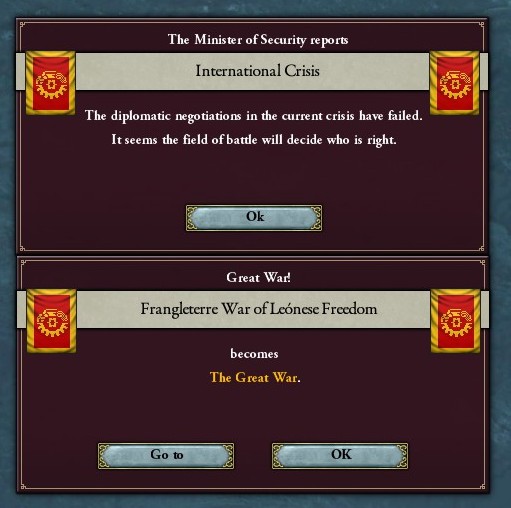Part 100: Civil War
Chapter 20 - Civil War - 1914 to 1916The year was 1914, and the Iberian peninsula was splintering and fragmenting, on the verge of collapse. Revolutionaries had seized the north, while loyalists were fortifying the south. Communists and socialists had armed themselves for war, while fascists and royalists were bracing for the coming attack. Rais Maz Mazini had declared the dawn of a new era, while Autocrat Surayj al-Shujae was bitterly committed to preserving the old order.
The year was 1914, and the Iberian peninsula had erupted into civil war.

From his hidden base in Qantabriyya, surrounded by hills and cradled by mountains, Maz Mazin had been deftly coordinating the communist movement for years now. Once a lowly soldier serving in the Andalusi Army, he had been radicalised by Serbian partisans whilst stationed with a small detachment in the Balkans, with the youngster secretly attending political debates and devouring revolutionary pamphlets. When the Majlis al-Shura withdrew the expeditionary force, Maz Mazin finally returned to the Iberian peninsula, bringing with him his newly-found and fervently-held ideals, a close circle of similarly-minded compatriots, and all the determination and ambition he could muster.
Hardly the stuff of revolutions, but it would prove to be enough, with a broad coalition of liberals, anarchists, socialists and communists rising against the autocratic rule of the Sultan and Majlis just a decade later.

Further south, from the historic capital of Qadis, Surayj al-Shujae had desperately parried and countered every lunge and attack thus far. A staunch advocate of aristocratic privilege, he had quickly risen through the ranks of the SGA over the past few years, expanding and strengthening the reach of the secret police until he’d infiltrated every organisation and society of any note in Al Andalus. This rapid rise to power climaxed with the Sultanic Coup, with Surayj overthrowing the Majlis al-Shura and restoring absolute power to the Sultan — or so he insisted.
In actuality, Sultan Khuzaymah was little more than a bed-bound, drug-addled marionette. So in the name of the Sultan and interest of the Sultanate, Surayj al-Shujae declared himself the regent and autocrat of Al Andalus, seizing absolute power for himself.

Two self-made leaders with irreconcilable ideals. Two veterans of very different wars. Two men who were born into nothing, who fought their way to the summit, who were destined to battle until only one remained.

The civil war is generally considered to have begun in the waning days of the summer of 1914, when the declaration of the Iberian Union incited the outbreak of rebellions within the Andalusi Army.


Salamanqa, Qunka, Baja, Marriya — compatriots and comrades turned their guns on one another all across the country as tensions erupted between poor and rich, commoner and officer, radical and royalist.


Most of these uprisings were abruptly crushed by loyalists, but several of the insurrections and mutinies in units stationed in northern Iberia actually succeeded, with the common soldiers revolting en masse, overcoming their stiff opposition and toppling their commanders. From there, the defectors rushed northwards — towards Qantabriyya, where Maz Mazin was preparing to launch his revolution.


And in August of 1914, at long last, the self-declared Rais of the Iberian Union did just that. A short speech was broadcast across the width of the peninsula, with Maz Mazin calling on all Iberians to take up their pistols and rifles in opposition to the corrupt, tyrannical regime of Sultan and Majlis. Not just the men either, he called on farmers to take up their swords and scythes, on street urchins to take up their knives on daggers, on housewives to take up their spoons and forks, urging them all to take the fight to their oppressors.
Only when the people were one would they prevail, and it would take every single body that they could muster.

Later dubbed the “Call for Change”, this speech was as good as a declaration of war, and the Majlis al-Shura had to retaliate. Or more accurately, the Autocrat had to retaliate, because it was he who’d promised to suppress the radicals, quash the rebels and avert civil war at any cost — a promise he was now sorely rueing.
Some historians consider this to be the proper beginning of the Andalusi Civil War, because it was only now that Autocrat Surayj al-Shujae dispatched an army to northern Iberia, with stern orders to root out the rebels and crush them.

Maz Mazin had been stationed in the autonomous governorate of León, which had declared their support for him and his cause, along with the governorates of Portugal, Castille and the Pyrenees. As the Andalusi Army marched into northern Iberia, however, the revolutionary leader hastily retreated back into the mountains. He wasn’t ready to battle against the full might of the Andalusi Army. Not yet, anyways.
Instead, Mazin opted for hit-and-run guerrilla warfare, striking the more isolated, withdrawn units of the Andalusi Army in blitz attacks before disappearing into the mountains of Qantabriyya again.


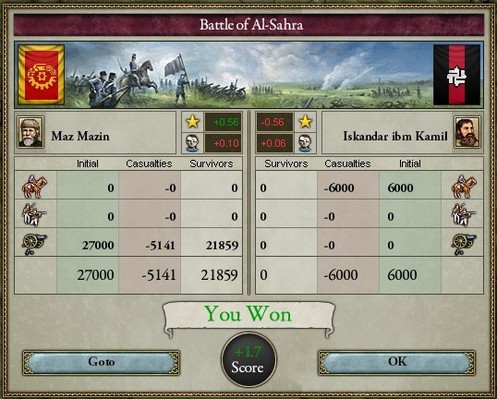
That was how the civil war began, with the loyalists becoming increasingly frustrated and handicapped as the rebels sapped at their strength. It couldn’t go on forever, however, and the loyalists managed to engage and immobilise part of Mazin’s army as they were crossing the plains of Saraqusta.
This rebel unit almost entirely consisted of artillery regiments, defectors who were fleeing northwards after overthrowing and executing their generals. But without much infantry to bolster their ranks, the artillerymen quickly crumbled before the loyalist onslaught, with thousands massacred over the space of mere hours.
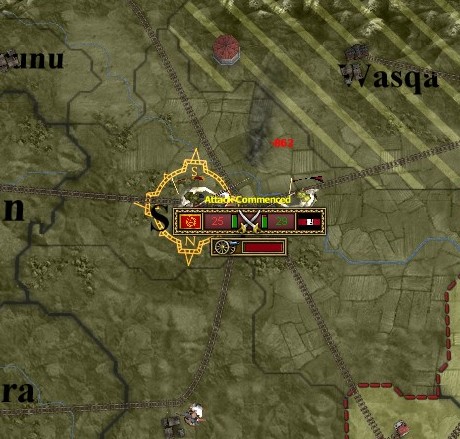

It wouldn’t get much better for the revolutionary cause, as Maz Mazin himself was drawn into battle at the same time, along with the most of his strength. The Rais had personally led a raid on Lishbuna, but he was pinned down by another Andalusi army whilst retreating northwards, and forced into battle on the outskirts of Burtuqal.
And it was here that a fatal blow was landed on the revolutionary cause, one that would not be forgotten anytime soon. This army was the bread and butter of the north, but caught off-guard and by surprise, the rebel ranks quickly collapsed into disorder and chaos in the days that followed, with the loyalists breaching their hastily-drawn lines, dislodging them from their fortified positions and bombarding them with shells as they retreated, all while raining fire from above. Maz Mazin had fled as soon as the fighting soured, leaving dozens of trampled flags and banners behind him, stained red with the blood of 50,000 volunteers.

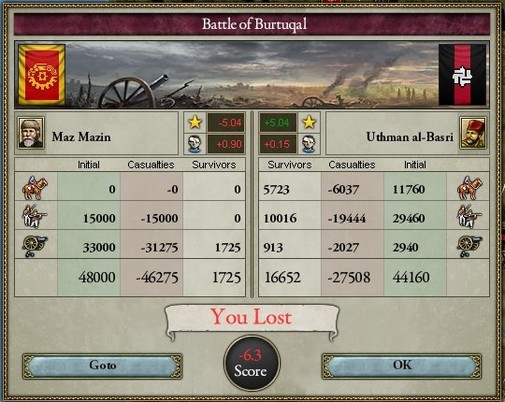
A revolution that was a decade in the making, and after mere weeks, all that was left was 50,000 corpses — this was the mighty “red army of the north”, as dozens of newspapers in Qadis jeered and taunted. Already, Autocrat Surayj began receiving congratulations from relieved nobles and business magnates in Qadis, with many speculating that this civil war would be crushed within the year, over before it could really begin…
The same could not be said of Andalusia’s cousin, across the width of the Mediterranean Sea. The revolution in Palermo had been swift and ruthless, with the rebels rising up in their tens of thousands, marching on the royal palace and executing the Emir within the space of a month. Acting on orders from Belgrade, the revolutionaries then declared the formation of the People’s Republic of Palermo and Italy, ending over six centuries of Jizrunid rule in the island.
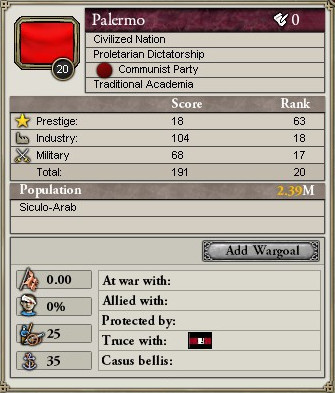

Was that the end of the Jizrunid dynasty, however?
To put it simply, no. A prominent journalist in Narbuna later likened the Jizrunids to cockroaches — the constant object of resentment and animus, always unwelcome and revolting, but somehow ever-lingering and enduring.
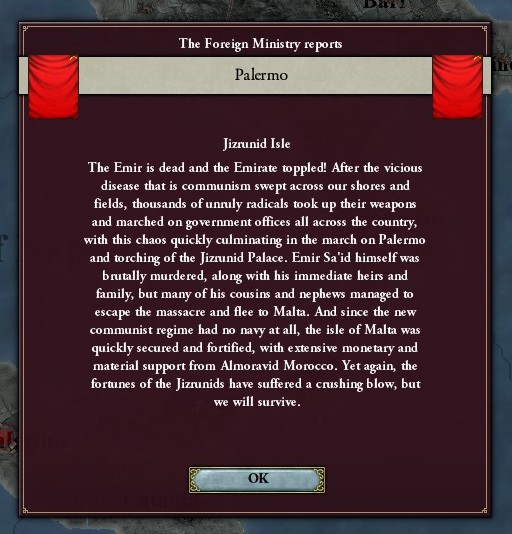
Emir Sa’id and his immediate heirs were executed by the revolutionaries, of course, but the Jizrunids were a very large and fertile family, and countless nephews and cousins managed to escape the slaughter in Palermo. Along with the few remaining loyalists, they fled to the island of Malta, which was promptly fortified and reinforced by the Almoravid Sultan.
This island would quickly become known as “Jizrunid Isle” in the years that followed — the last holdout of a once-mighty dynasty, one that ruled an empire stretching from Gharbia to Iberia to India, reigning from the pinnacle of the globe without equal or compeer. Once.
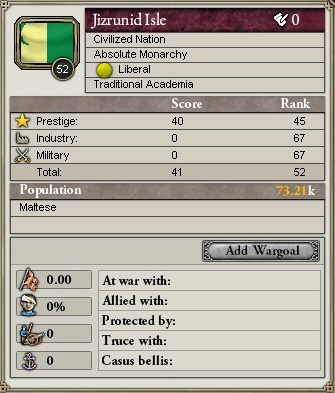
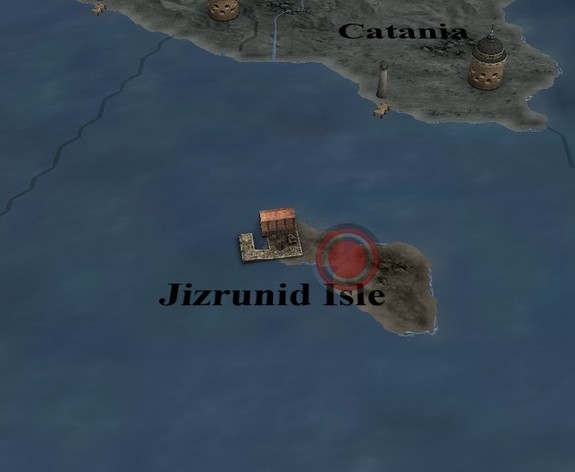
As one dynasty declines into the murky depths of obscurity, however, another rises to prominence and renown.
With economic and material support from several Great Powers, the Khedive of the Kongo had declared war against the Sultanate of Al Andalus, with the Min-al-Bita dynasty determined to wrench free of the chains tying them to Qadis. Even as duels between ironclads and battleships raged along the coast of Western Africa, thousands of colonial troops surged across the Land Corridor from Eastern Africa, with battles erupting in the dense rainforests and arid savannahs and cavernous valleys of the Kongo Basin.
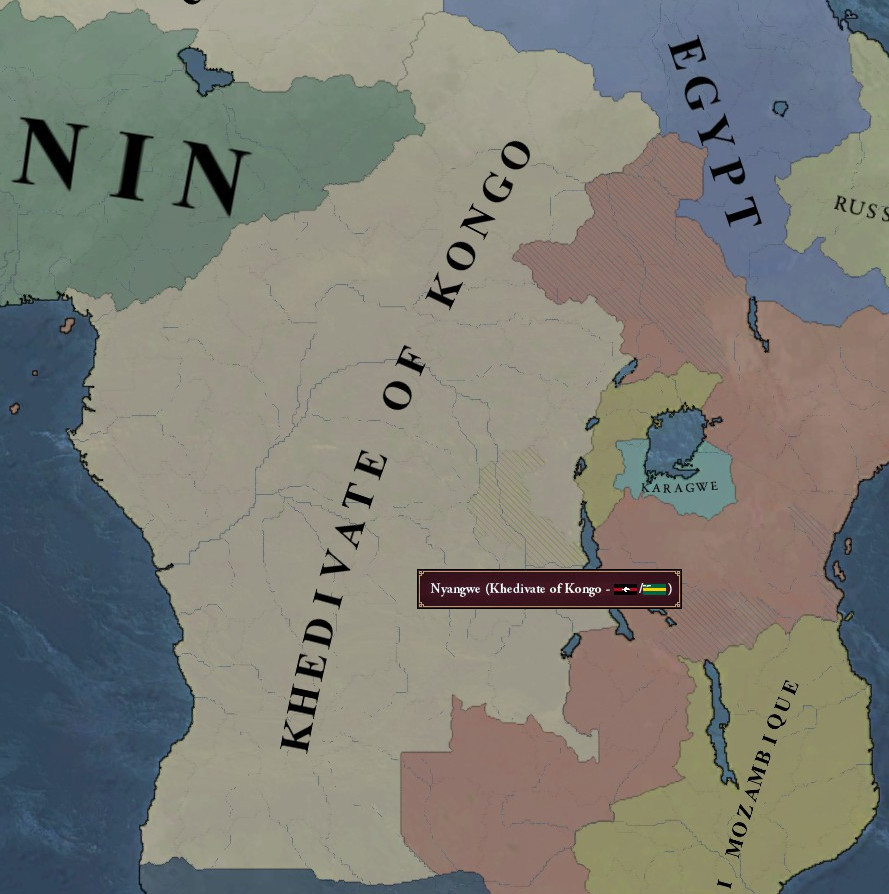
Maz Mazin, desperate to breathe new life into his sputtering revolution, reached out to Khedive Wahb. After diplomats were exchanged and treaties signed, the two leaders agreed to a temporary alliance, with the Khedive effectively intervening in the civil war in favour of the radicals, in return for the Rais guaranteeing the complete and unfettered independence of Kongo once the loyalists were defeated and the capital secured.
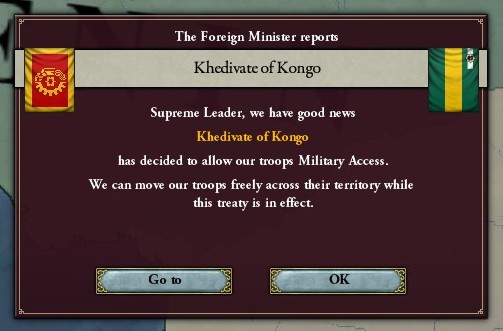
That was a good start, and the prospects of the revolution would only improve in the weeks that followed, with a small party arriving in Qantabriyya and requesting an audience with the “Andalusi firebrand”. Apparently, the communist regime in Serbia had heard of the desperate struggle raging between the bourgeoisie and proletariat of Iberia, and immediately resolved to aid their comrades in the form of money, arms and military experience.
Maz Mazin accepted the offer of assistance, but only warily. He had listened to the speeches and read the pamphlets that circulated around Belgrade, and knew full well that they smugly preached for direct democracy, the right to self-determination and revolution without end — all self-righteous and dangerous ideas, as far Maz Mazin was concerned. But he needed the support, so he bowed and smiled and nodded, his hands outstretched.
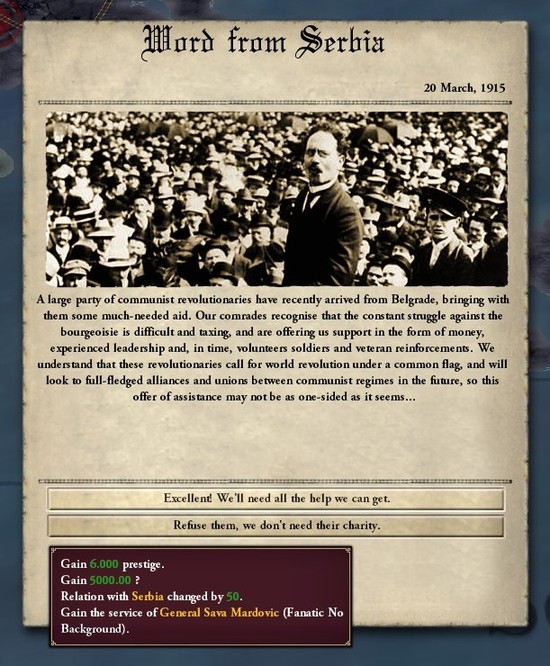
And slowly, the embers of the revolution began to flicker into life once more. There was no shortage of volunteers willing to take up rifles and guns, with the poor and starving and oppressed streaming towards Qantabriyya from every corner of Iberia, but now they could be properly fed, housed, armed and trained. Maz Mazin wasn’t a fool, and he knew that his revolution was hanging by a thread, so he was determined that when the loyalists and radicals next clashed, they would do so on equal terms.
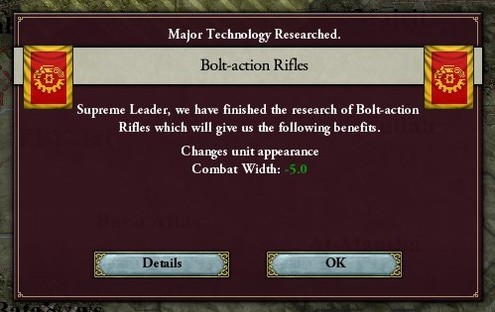
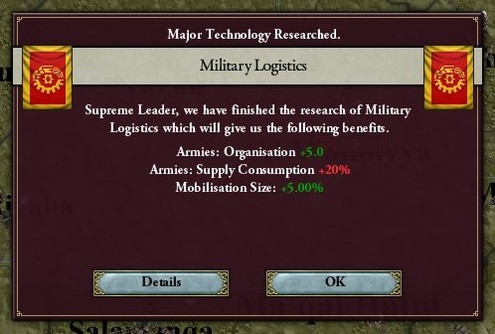
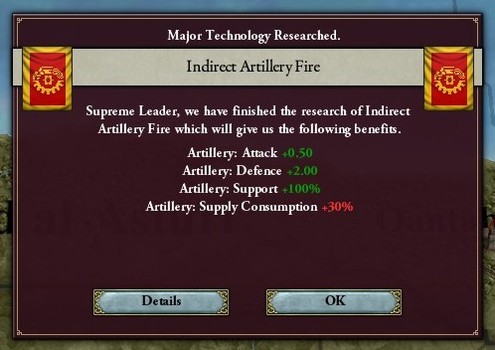
Of course, this couldn’t go on forever. Once word of the international aid being poured into the revolution reached Qadis, Autocrat Surayj hastily ordered a blockade of the northern coastline, with warships patrolling and shelling the major harbours and ports of the self-proclaimed Iberian Union within days.
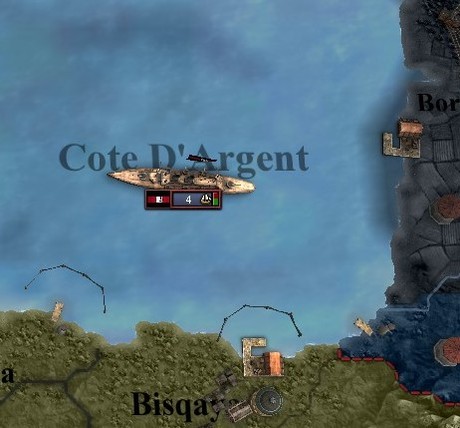
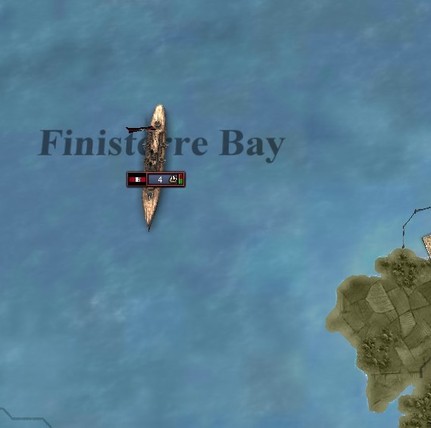
The Black Vizier wanted to quash this petty revolution before the new year, so whilst his titanic warships blockaded and starved the coastlines of northern Iberia, he gave his officers and soldiers free rein to burn, pillage, ravage, plunder and ransack to their heart’s content, without fear of reprisal or punishment.
This wanton violence quickly exacerbated the already-precarious situation in the Iberian Union, and by the dying days of 1914, drought and famine was sweeping across northern Iberia. First thousands, then tens of thousands, hundreds of thousands, and finally millions of poor, elderly, disabled and wounded would perish in the months and years that followed, begging and starving on the streets of Burtuqal, Liyun, Burghus, Banbaluna and Saraqusta as the grain and wheat harvested in the surrounding countryside was redirected to Qantabriyya, where they fed the rapidly-growing armies of Maz Mazin.
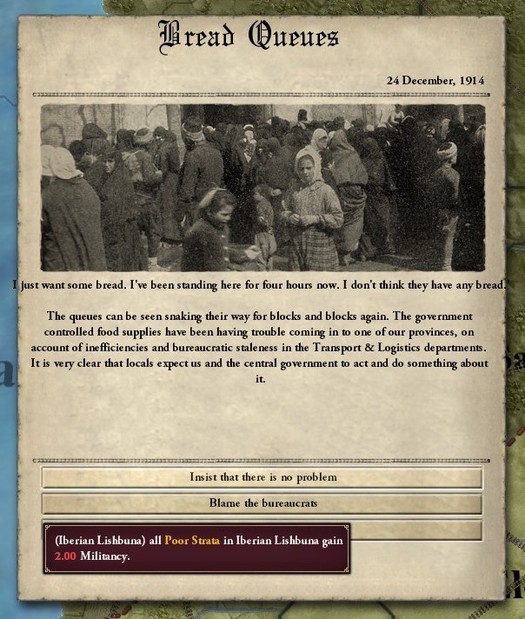
The Rais dourly insisted that there was no shortage or scarcity at all, even refusing any relief and aid offered by foreign politicians and tycoons. He refused to show weakness, instead devoting his full attention to the expansion and training of the Red Army — so-named in memory of their crushing defeat in Burtuqal, in honour of their fifty thousand fallen comrades, and in defiance of the mocking insults of the south.
The Andalusi Army was gradually pushing northwards, doubtless expecting another string of resounding victories, but the Red Army would be waiting for them. They had begun as a mob of disaffected workers and deserters, they had marched into war as a rabble of naive boys, they were forged into an army in the crucible of Burtuqal — and now, they were determined to emerge victorious in the struggle for Iberia.
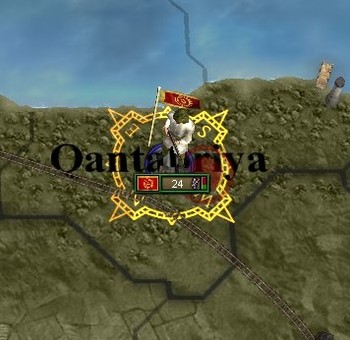
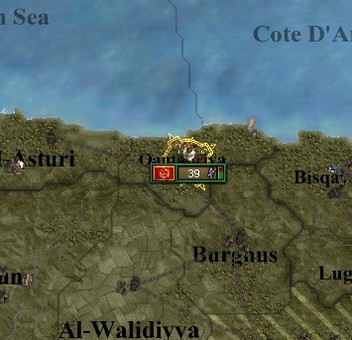
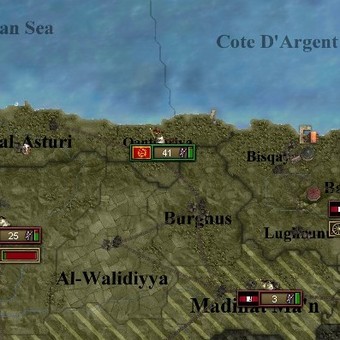
The civil war wasn’t over yet, Rais Maz Mazin knew that much, as did Autocrat Surayj al-Shujae. Surayj himself was fighting battles on very different theatres, however, with the Black Vizier clashing with enemies in Qantabriyya and Qadis alike.
As it happens, not everyone was delighted with the tyrannical, dictatorial rule of the aptly-named Autocrat. Whispers of opposition to his regime began swirling around the palaces and courtyards and assemblies of the capital, and the longer this civil war went on, the louder those whispers became. So, intent on crushing the revolution as quickly as possible, Surayj appealed to the Taifas for monetary and material support, calling for the emirs and sheikhs of Al Andalus to prove their worth and devotion to the Sultan and Sultanate…
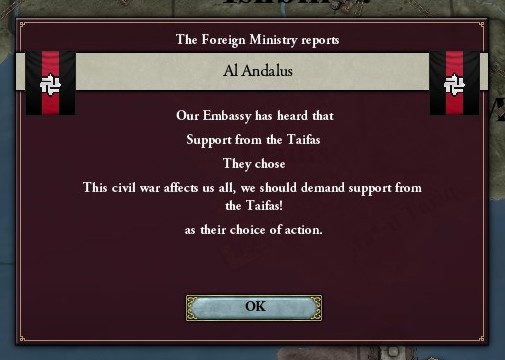
And by and large, that call was met with earnest enthusiasm, with the Yahaffids of Balansiyyah donating millions of dinars to stave off mounting debt and bankruptcy, the Abbadids of Lishbuna sending tens of thousands of conscripts to bolster the war effort, the Hammudids of Malaqah railing thousands of tonnes of food and supplies to feed and clothe the loyalist armies. Even the smaller taifas — the Hakami, Farahids, Ghizvanni, Houdi and so on — contributed what they could, publishing pamphlets in support of the Black Vizier, sending officers to serve on the frontlines, even offering their palaces as army headquarters.
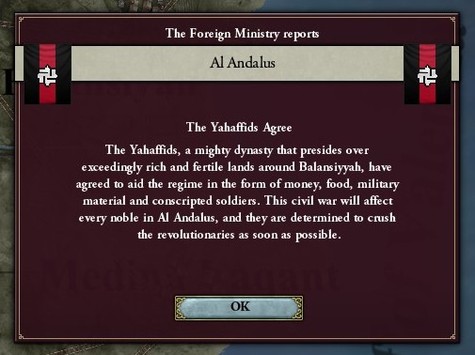
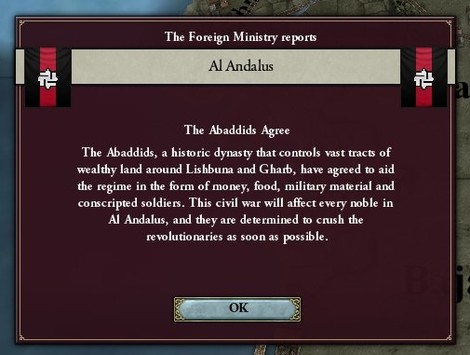
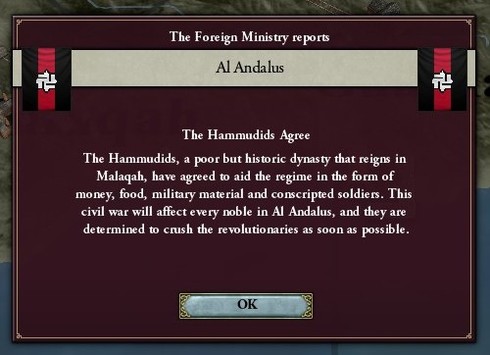
But there were some glaring exceptions as well. The Aftasids, a pretentiously proud and immensely rich dynasty that stretches back to the medieval era, were unresponsive and apathetic. Similarly, Idris Tirruni of Qattalun was deaf to any summons, simply fortifying his borders and observing the struggle from afar.
Worrying, but Surayj didn’t have the time or resources to squabble with nobles, so he appointed SGA agents to monitor and surveil them, and turned his attentions back to the task at hand.
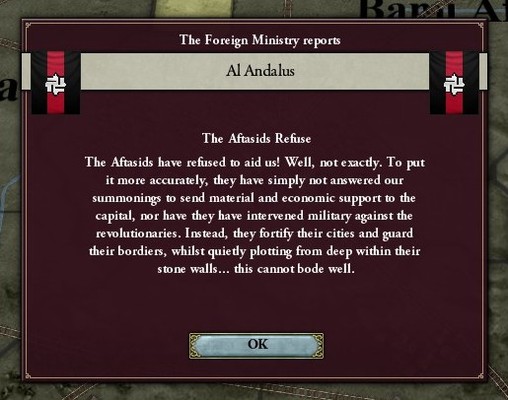
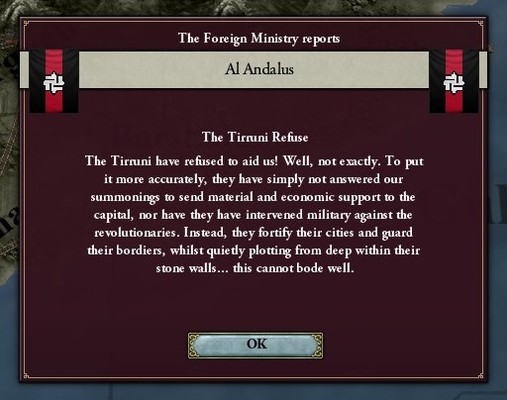
And the task awaiting him was herculean, because Maz Mazin had just launched his first offensive.
Marching under banners drenched in blood, the Red Army thrust southwards and towards Liyun, where 30,000 Andalusi soldiers were besieging Liyun and its environs. The confrontation quickly devolved into a hurricane of bullets and shells, with the fighting and bombardment stretching out across two weeks until the loyalists finally conceded defeat and abandoned their siege.
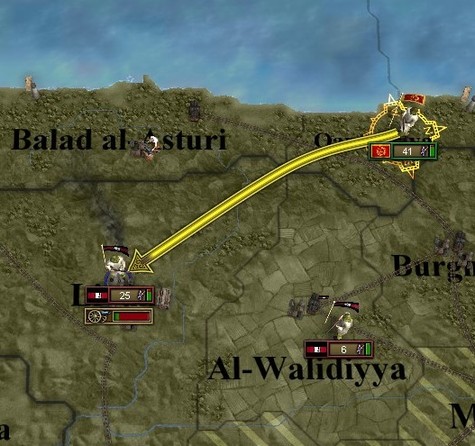
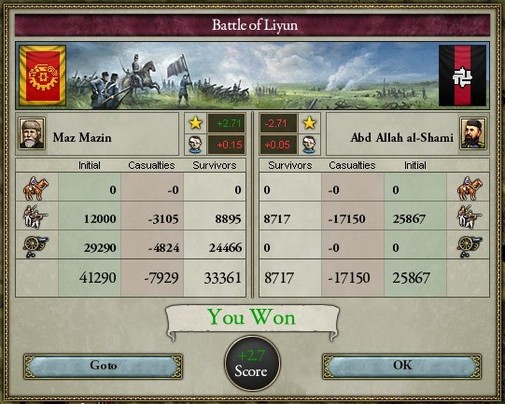
In a move that surprised even his own commanders and officers, Maz Mazin then retreated back into Qantabriyya. The revolutionary generals immediately urged their leader to capitalise on his victory, but the Rais wasn’t willing to take any chances, not after the disaster at Burtuqal, instead choosing to winter in the mountains, waiting and watching…
And just as the first rays of sunlight broke through the heavy clouds of March, another Andalusi army besieged Liyun, this time numbering 40,000 conscripts. Like a pistol at full cock, Maz Mazin shot southwards and engaged the loyalists, barraging them with grenades and torpedos as they were gradually driven backwards. Just a week later, the loyalists were forced to retreat for the second time, with the revolutionaries scoring another impressive victory.
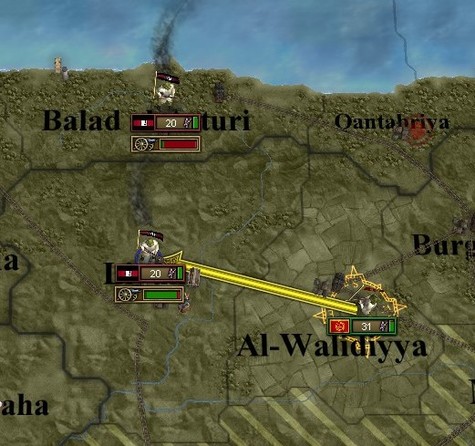
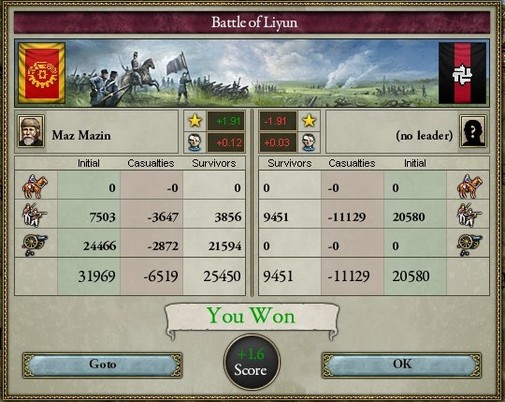
This wasn’t the death knell of the revolution, as the nobles and viziers in Qadis had expected, this was just the beginning. Whilst Autocrat Surayj scrambled to maintain order in Qadis, Rais Maz Mazin roused more and more people to his cause. Everything in Qadis was corrupt and rotting, the revolutionary leader claimed over a series of broadcasts, and it all needed to be amputated, cleaved, castrated.
Battles raged throughout the summer of 1915, with Maz Mazin embarking on an ambitious campaign in which he pinned down and engaged several smaller, weaker Andalusi units.
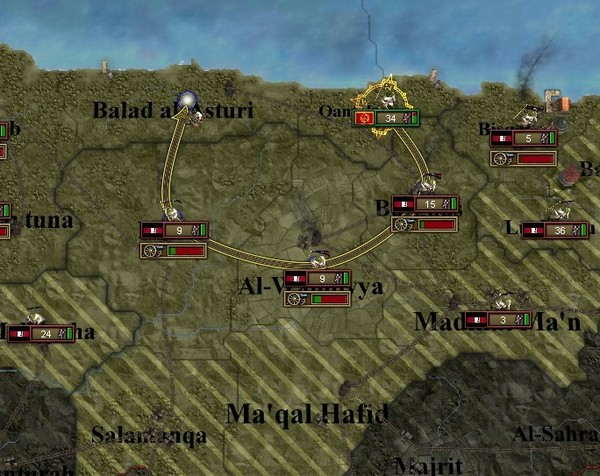
The Red Army was growing larger, stronger and more experienced with every passing day, quickly overwhelming these loyalist militias without much trouble. Tens of thousands were killed in the thick battlefields of northern Iberia, and tens of thousands more were taken captive — but they wouldn’t be prisoners for long.
Maz Mazin didn’t have the food or supplies to feed his prisoners of war, so at the height of summer, he issued a momentous decree — that the Red Army would take no captives. Every man and boy fighting under monarchist and fascist banners would be killed, along with unyielding peasants and farmers, traitorous workers and labourers, cowardly deserters and renegades, until only the red banners of the revolution were left.
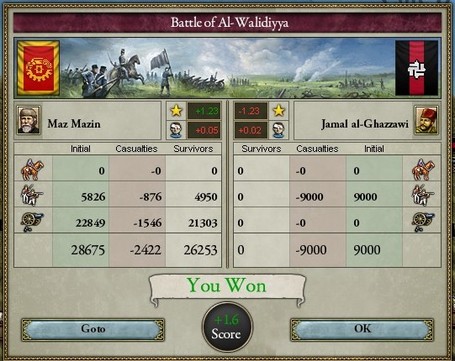
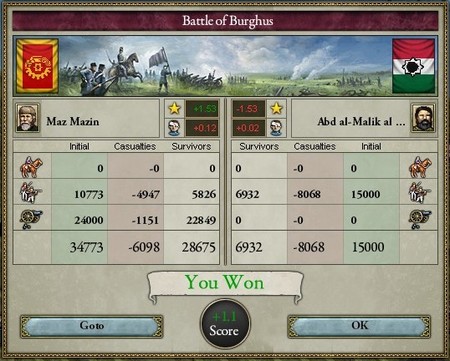
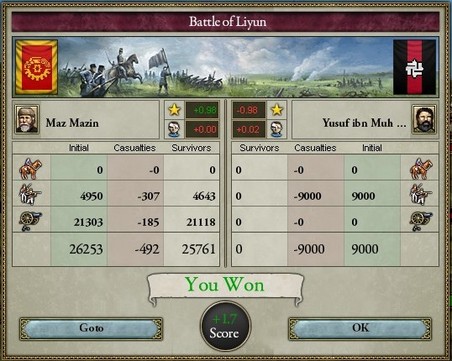
For the loyalists, the civil war had deteriorated from an assured victory to a complete disaster in just half a year, so it isn’t much surprise tensions and agitation began to erupt into protests and skirmishes in the streets of Qadis.
In the midst of this rising dissent, the enemies of the Autocrat finally made their move. At a remote refuge in Niebla, armed soldiers stormed a heavily-guarded manor and secured Zubayr Zulfiqar — the infant heir to the Sultanate of Al Andalus. At the same time, a confederation of aristocrats, landowners and moderates led by the Aftasid Emir rose up in Qadis, bolstered by defecting generals and soldiers, and seized control of the principal economic and political centres. With his allies and strongholds suddenly under assault, the Black Vizier had a choice to make — stand his ground and fight the counter-coup, or escape the city and return with an army.
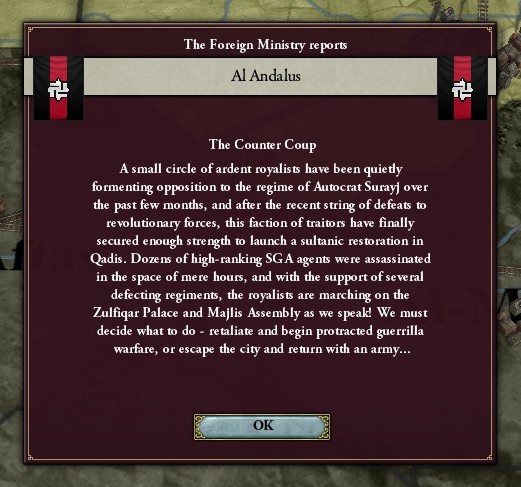
Sujayr had never been a fighter. He was a survivor, and true to his nature, he chose to flee the capital whilst his viziers and SGA agents were being murdered and executed all around him. And his choice would reverberate in the weeks and months that followed, sundering and weakening the south.
For the radicals, however, this was a godsend. Maz Mazin wasted no time in launching another offensive, engaging and prevailing over tens of thousands of well-armed, well-trained Andalusi soldiers in the fortified city of Madinat Ma’n.

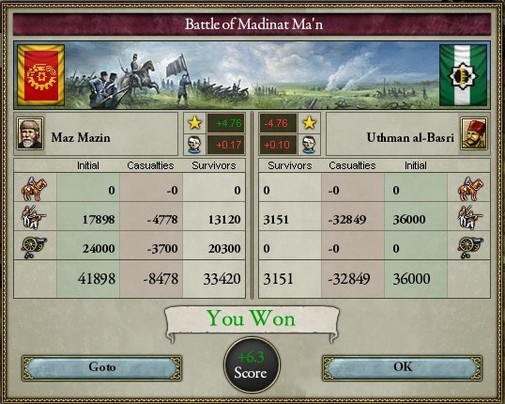
The battle of Madinat Ma’n counted almost 40,000 casualties, with the rebels executing the few survivors who raised the white flag. There wouldn’t be much time for celebrations, however, because another 40,000 loyalists were on the verge of seizing Liyun — the industrial and economic capital of the northern governorates.
So Maz Mazin leapt westward, engaging the loyalists outside the city’s fortifications just days later. The battle that followed would rage weeks without end, unwavering and unrelenting, with Liyun swapping hands several times as loyalists and radicals wrestled for control of the city. After almost a month of thick fighting, however, it was the Andalusi Army who retreated, abandoning another 40,000 corpses to the crows and mass graves.
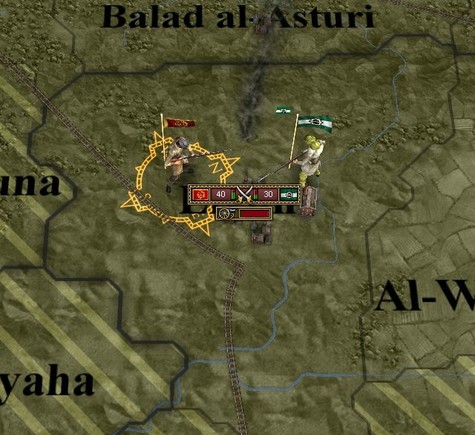
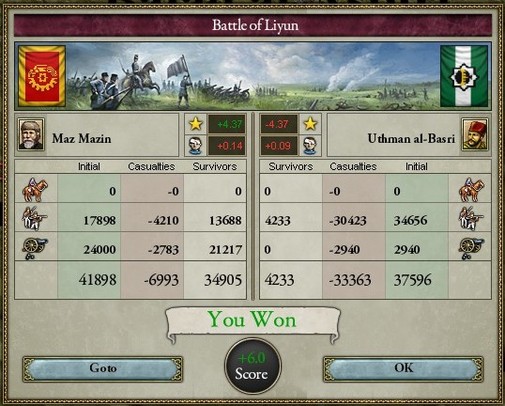
The situation in the north was quickly spiralling out of control, with Maz Mazin only growing in strength and popularity as his victories began to mount, but the response from Qadis was slow and feeble. The nobles who launched the Counter Coup managed to seize control of the capital, where they declared the restoration of power to Sultan Khuzaymah, but their authority didn’t extend beyond the city boundaries — in fact, some generals and commanders even refused to recognise their rule altogether, taking their orders from the Autocrat, and him alone.
To make matters worse, the protests and demonstrations had intensified into riots and rampages, with thousands of commoners taking to the streets and alleyways of Qadis. Well, it began as thousands, but that trickle quickly swelled into tens of thousands, then hundreds of thousands.
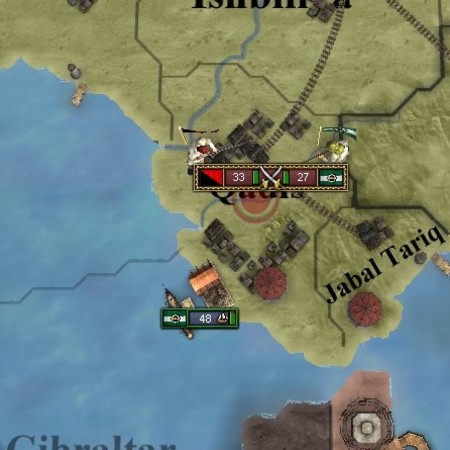
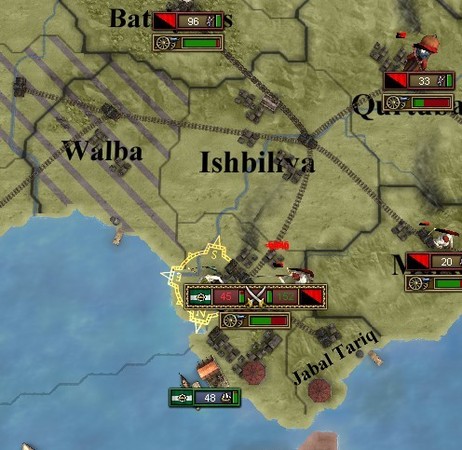
This was what Maz Mazin had been waiting for — the rising of the people. The Rais was desperate to begin pushing southward, but the loyalist armies just kept swarming across northern Iberia, forcing him to divert his own forces and engage them.
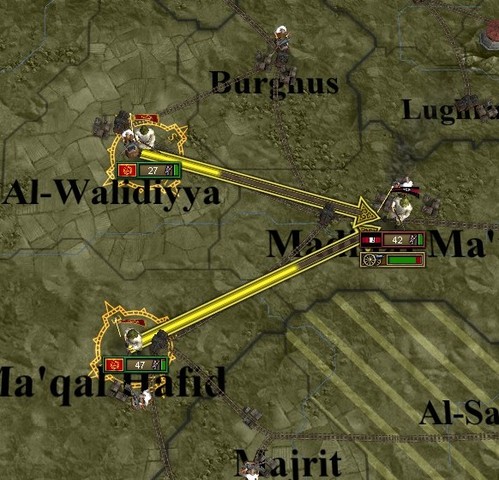
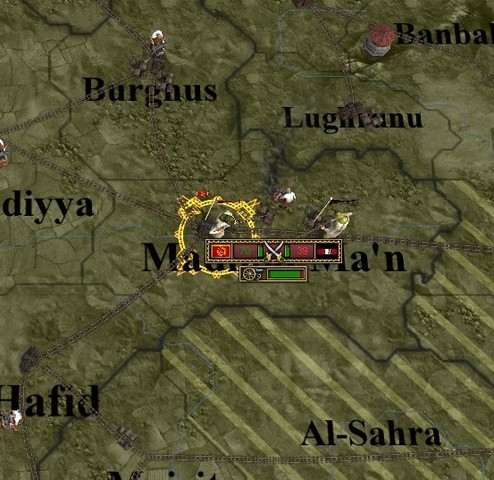
And the battles were only getting bigger and bloodier. In the vicious month-long struggle for Madinat Ma’n, almost 40,000 loyalists and rebels alike perished in an impressive variety of deaths, ranging from gunfire and execution to starvation and frostbite.
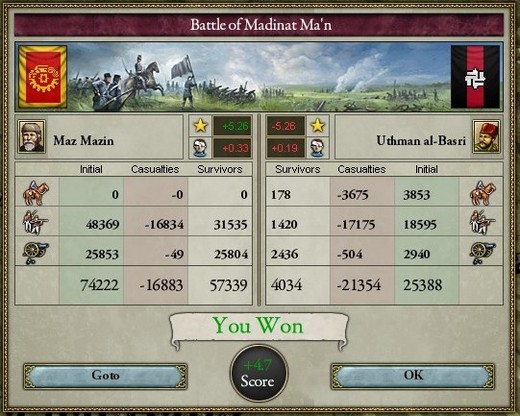
The north was eventually secured, however, and the Red Army began the march south. But the loyalists wouldn’t be surrendering so easily, and chose to make their stand at Qunturah, a city strategically-located on the border between the north and south. That was where loyalist and revolutionary clashed, but the battle quickly devolved into a grinding stalemate, with neither side able to dislodge the other without suffering immense losses…
The capture of this city would pave the way towards Qadis, however, so Maz Mazin threw every last soldier into the battlefield anyways, with almost 150,000 men fighting and grappling and dying in the narrow streets and ruined roads of Qunturah.
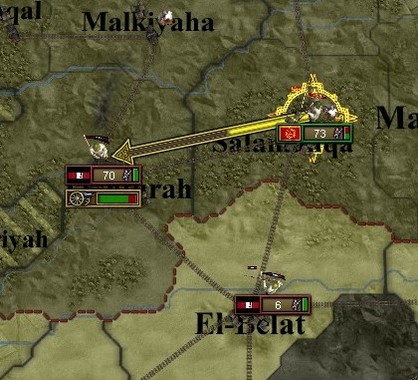
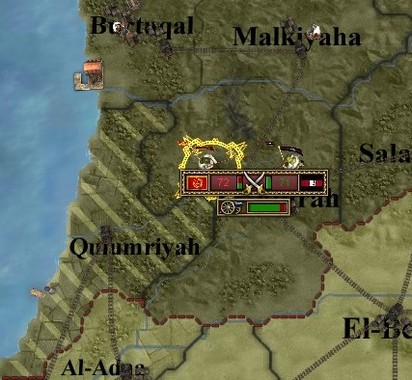
The battle of Qunturah would rage throughout the winter of 1915 and 1916, stuttering and faltering whenever the bitter winter froze the gunnery and artillery, but quickly flaring back into life in the thawing that followed. It quickly became the defining battle of the civil war, attracting international attention as neither side backed down, throwing every last man and boy into the meat-grinder of Qunturah. This ferocious struggle only came to end when Maz Mazin ordered a cavalry charge, with the sudden assault of horses taking the loyalists by surprise, scattering their lines and allowing the rebels to seize the railway station and citadel of Qunturah.
The loyalists finally withdrew and the battle came to an end, but the war certainly hadn’t, with the Red Army on the march again within days. Behind them, they left 80,000 casualties and a crater of a city, where a large and vibrant metropolis once stood.
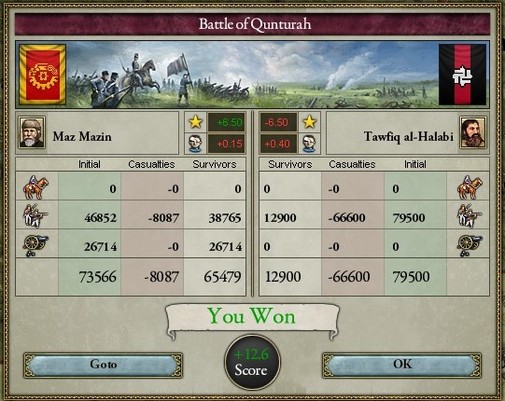
Meanwhile, in an announcement that quickly stole international headlines, the Khedive of the Kongo announced an end to his war in February of 1916. The peace treaty was crude and simple, with the new government in Qadis agreeing to recognise the territories in the Kongo Basin as free and independent from Al Andalus, finally ending the war in Africa.
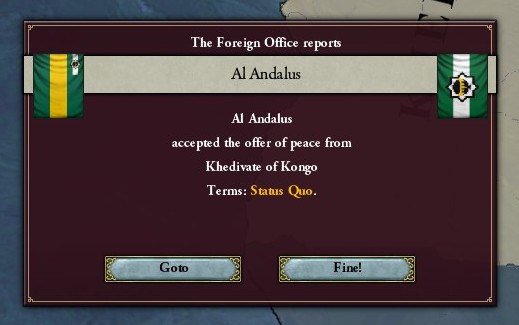
Within days, however, it became clear that the government never really had a choice in the matter at all, not when the metropole of the Andalusi Empire was under siege…
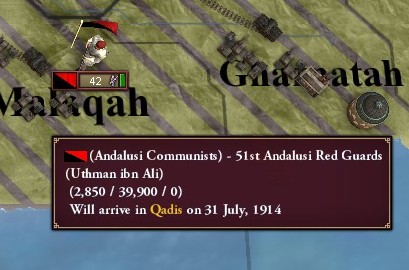
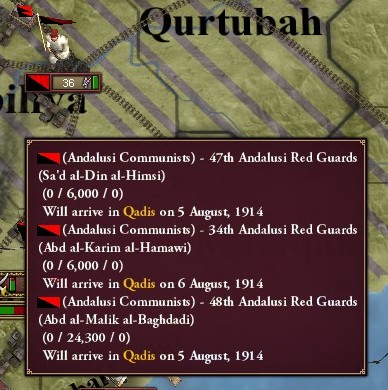
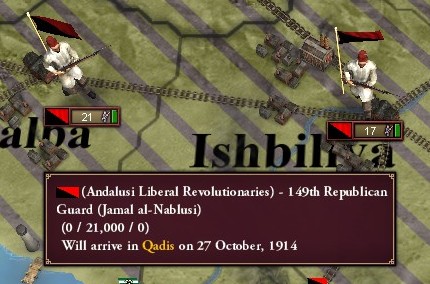

There was no doubt about it, the revolution had finally reached the south.

Communists and socialists, anarchists and liberals, monarchists and fascists — every breed of rebel seemed to marching in the streets of Qadis, armed with pistols and swords and knives and forks,
Maz Mazin became increasingly desperate to reach the capital, he had to be there when the Sultan and Majlis were finally overthrown, so he accelerated his plans and pushed southwards on forced marches. And in the weeks and months that followed, a string of cities and towns capitulated to the revolutionaries— Tulaytullah, Al-Belat, Qurtubah, Al-Mansha, Banu Aftas, Batalyaws, Ishbiliya, all paving the road to the Gem of the World, Qadis.
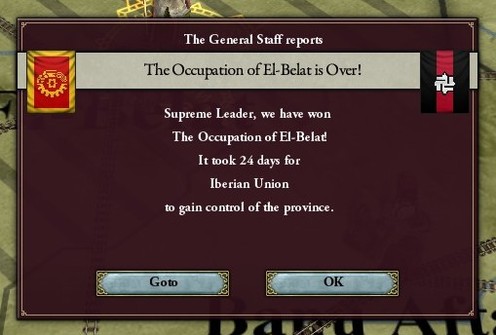
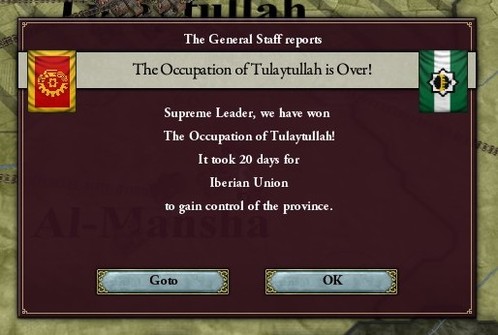
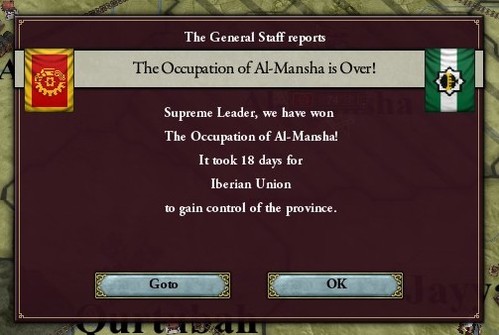
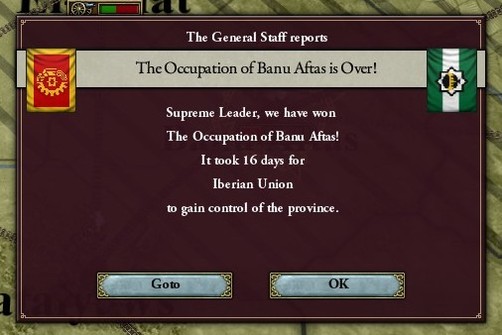
As these cities were being pillaged and ransacked, however, large numbers of nobles and aristocrats were taken prisoner. Most of them were minor patricians, but many were also men of high rank and distinction, men who could trace their lineage through the centuries, who’d inherited prestigious titles and immense riches, who’s ancestors had fought and died for the Sultanate. Doubtless they were expecting to be treated with courtesy and comfort…
Maz Mazin was hard and flint-eyed, however, and refused their pleas for mercy and ransom. Each and every noble that was captured, be him wali or sheikh or emir, was brought to the centre of the city they’d once governed. There, in full view of the masses, they were strapped to a wooden pillar by the neck, with a grating metal collar fastened around the muscle and sinew and flesh, gradually tightening until all the life had been driven out of them. This was the Garrotting of the Taifas, and it would be the fate of every noble and aristocrat in Al Andalus.
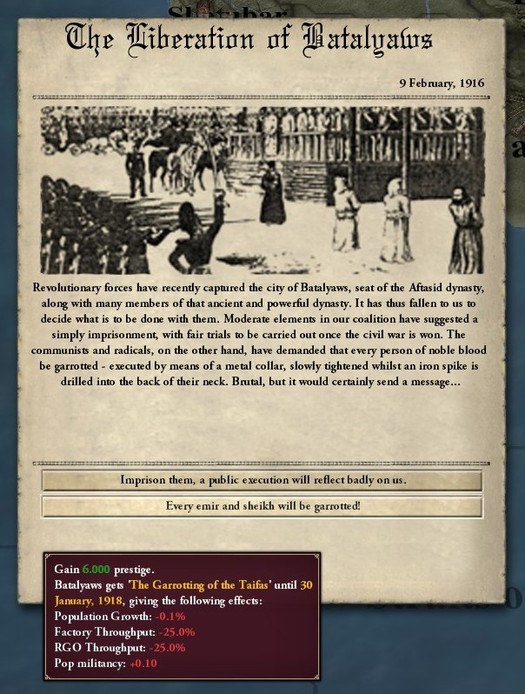
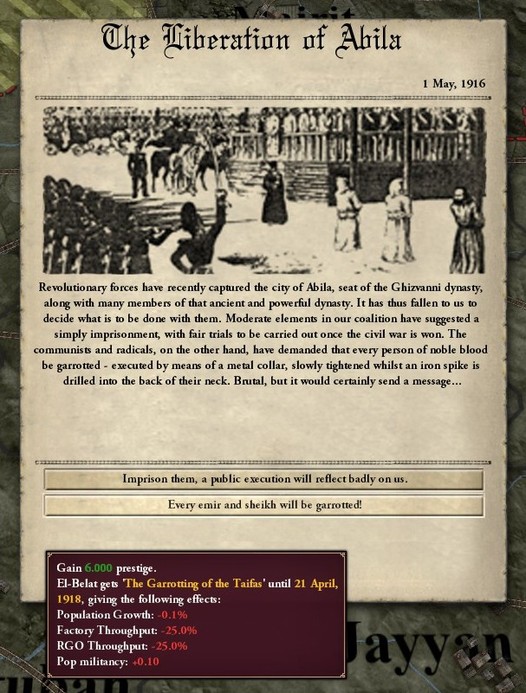
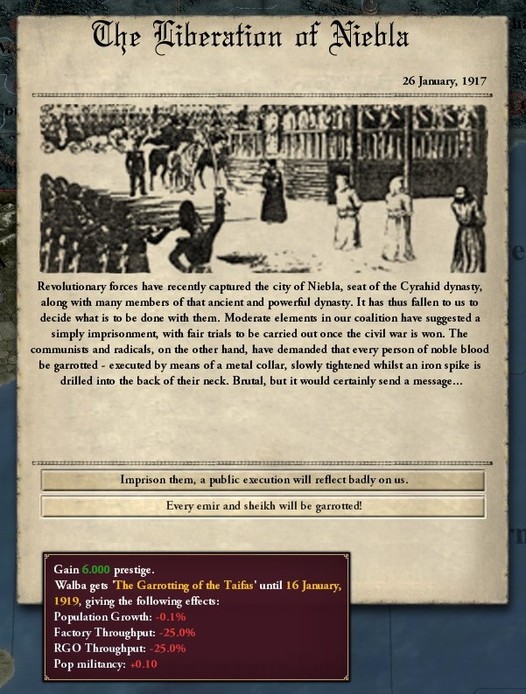
The Red Army drove towards Qadis, and just as the summer of 1916 broke, the revolutionaries arrived at the capital. There would be no fighting here, no vicious struggle, no battle for dominance of the city or duel between loyalists and radicals.

Why?
Because the capital had already fallen, to workers and labourers, storeowners and urchins, housewives and children. One million rebels rose up against their oppressors, fighting their guardsmen and militias, storming their palaces and manors, and finally toppling the Sultan and Majlis. And following the example of the Red Army, the sickly and drug-addled Sultan Khuzaymah was dragged into the largest thoroughfare of Qadis, where his gruesome garrotting was immortalised in a thousand photographs and films.
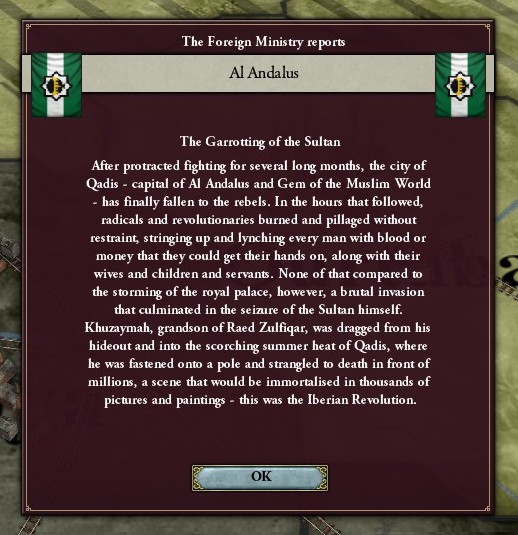
And so ends the dynasty of Raed Zulfiqar.
When Maz Mazin finally entered Qadis, fulfilling a distant dream that stretched back years and decades, the rebels immediately declared him the “Rais Ala’la”, the “Supreme Leader”. He was the firebrand of the revolution, he was the leader of the masses, he was the commander of the Red Army — and now, he would be the first to lead the Iberian Union.
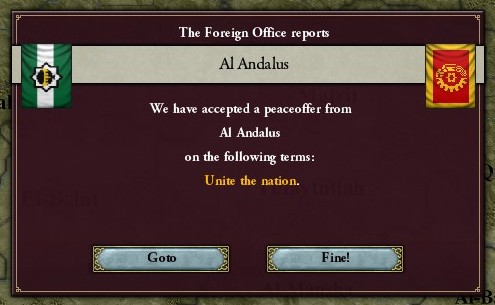
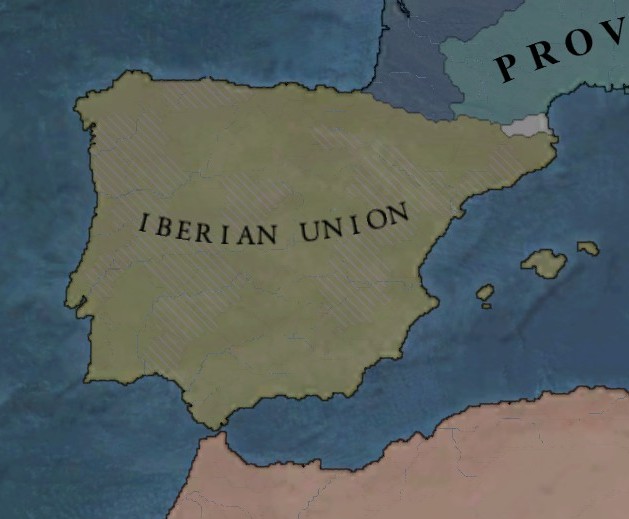
Just as the Supreme Leader announced a series of sweeping reforms and draconian decrees, however, telegrams arrived from Paris, Smolensk and Marrakesh.
Apparently, whilst the civil war had been raging these past few years, a certain Idris Tirruni had been negotiating with the prime ministers and grand viziers of Russia, Morocco and the Dual Monarchy. Revolutions in Serbia and Palermo could be overlooked, but all of them were in agreement that the radicals and communists could not be allowed to seize power in Al Andalus, not under any circumstances… but why leave the Zulfiqars and the Majlis in power either?
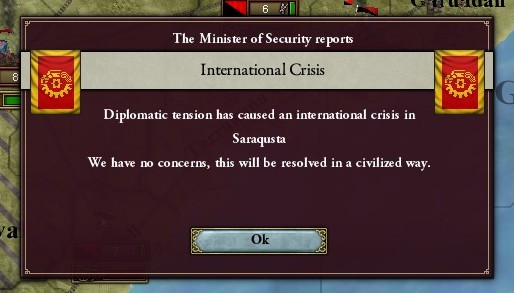
So an alliance was drawn up between the four powers, whereby they would sweep into Al Andalus once the civil war had ended, swatting aside the remnants of the revolution and installing Idris Tirruni as the new Sultan of Al Andalus. It shouldn’t pose too much of a problem, not when the Iberian peninsula was emerging from a long-winded, devastating civil war. The campaign would be short and resounding, probably over by Christmas…
As thousands of patriotic and jingoistic youngsters were being conscripted and armed, however, little do they know that this was just the beginning. The beginning of the largest and deadliest war in history, the war to end all wars, the Great War.
